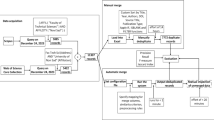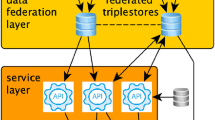Abstract
This paper details a unique data experiment carried out at the University of Amsterdam, Center for Digital Humanities. Data pertaining to monographs were collected from three autonomous resources, the Scopus Journal Index, WorldCat.org and Goodreads, and linked according to unique identifiers in a new Microsoft SQL database. The purpose of the experiment was to investigate co-varied metrics for a list of book titles based on their citation impact (from Scopus), presence in international libraries (WorldCat.org) and visibility as publically reviewed items (Goodreads). The results of our data experiment highlighted current problems related citation indices and the way that books are recorded by different citing authors. Our research further demonstrates the primary problem of matching book titles as ‘cited objects’ with book titles held in a union library catalog, given that books are always recorded distinctly in libraries if published as separate editions with different International Standard Book Numbers (ISBNs). Due to various ‘matching’ problems related to the ISBN, we suggest a new type of identifier, a ‘Book Object Identifier’, which would allow bibliometricians to recognize a book published in multiple formats and editions as ‘one object’ suitable for evaluation. The BOI standard would be most useful for books published in the same language, and would more easily support the integration of data from different types of book indexes.



Similar content being viewed by others
References
Adams, J., & Testa, J. (2011). Thomson Reuters book citation index. In E. Noyons, P. Ngulube, & J. Leta (Eds.), The 13th conference of the international society for scientometrics and informetrics (Vol. I, pp. 13–18). Durban: ISSI, Leiden University and the University of Zululand.
Alemu, G., Stevens, B., & Ross, P. (2012). Towards a conceptual framework for user-driven semantic metadata interoperability in digital libraries: A social constructivist approach. New Library World, 113(1/2), 38–54.
Alipour-Hafezi, M., Ali Shiri, A. H., & Ghaebi, A. (2010). Interoperability models in digital libraries: an overview. The Electronic Library, 28(3), 438–452.
Archambault, E., Vignola-Gagne, E., Cote, G., Lariviere, V., & Gingras, Y. (2006). Benchmarking scientific output in the social sciences and humanities: The limits of existing databases. Scientometrics, 68, 329–342.
Bod, R. (2012). De vergeten wetenschappen: Een geschiedenis van de humaniora. Amsterdam: Bert Bakker.
Bod, R. (2013). A new history of the humanities. The search for principles and patterns from antiquity to the present. Oxford, UK: Oxford University Press.
DOI Factsheet. (2015). DOI® system and the ISBN system. Retrieved December 1, 2015 from https://www.doi.org/factsheets/ISBN-A.html.
Fox, E. A., & Marchionini, G. (1998). Toward a worldwide digital library. Communications of the ACM, 41(4), 29–32.
Garfield, E. (1955). Citation indexes for science—new dimension in documentation through association of ideas. Science, 122, 108–111.
Godby, C. J., Smith, D. & Childress, E. (2003). Two paths to interoperable metadata. Paper presented at the 2003 Dublin Core conference DC-2003: Supporting Communities of Discourse and Practice—Metadata Research & Applications. Seattle, Washington (USA). Retrieved November 20, 2015 from http://www.oclc.org/content/dam/research/publications/library/2003/godby-dc2003.pdf.
Gorraiz, J., Purnell, P., & Glänzel, W. (2013). Opportunities and limitations of the book citation index. Journal of the American Society for Information Science and Technology, 64(7), 1388–1398.
Hammarfelt, B. (2011). Interdisciplinarity and the intellectual base of literature studies: Citation analysis of highly cited monographs. Scientometrics, 86(3), 705–725.
Hicks, D. & Wang, J. (2009). Towards a bibliometric database for the social sciences and humanities. A European Scoping Project (Appendix 1 to Martin et al., 2010). Arizona: School of Public Policy, Georgia University of Technology.
Kousha, K., & Thelwall, M. (2009). Google book citation for assessing invisible impact? Journal of the American Society for Information Science and Technology, 60(8), 1537–1549.
Kousha, K., & Thelwall, M. (2011). Assessing the citation impact of books: The role of Google Books, Google Scholar, and Scopus. Journal of the American Society for Information Science and Technology, 62(11), 2147–2164.
Linmans, A. J. M. (2010). Why with bibliometrics the humanities does not need to be the weakest link. Indicators for research evaluation based on citations, library holdings, and productivity measures. Scientometrics, 83(2), 337–354.
Martin, B., Tang, P., Morgan, M., Glänzel, W., Hornbostel, S., Lauer, G., et al. (2010). “Towards a bibliometric database for the social sciences and humanities—A European scoping project” a report produced for DFG, ESRC, AHRC, NWO, ANR and ESF. Sussex: Science and Technology Policy Research Unit.
McDonough, J. (2009). XML, interoperability and the social construction of mark-up languages: the library example, Digital Libraries Quarterly, 3(3). Retrieved October 28, 2015 from http://www.digitalhumanities.org/dhq/vol/3/3/000064/000064.html.
Moed, H. F., Linmans, J., Nederhof, A., Zuccala, A., López Illescas, C., & Moya Anegón, F. (2009). Options for a comprehensive database of research outputs in social sciences and humanities (Version 6, 2009). http://www.dfg.de/download/pdf/foerderung/grundlagen_dfg_foerderung/informationen_fachwissenschaften/geisteswissenschaften/annex_2_en.pdf. Accessed June 22, 2015.
Nederhof, A. J. (2006). Bibliometric monitoring of research performance in the social sciences and the humanities: A review. Scientometrics, 66(1), 81–100.
OCLC. (2012). Goodreads and OCLC work together to provide greater visibility for public libraries online. https://www.oclc.org/news/announcements/2012/announcement44.en.html. Accessed Nov 11, 2015.
Ossenblok, T. L. B., Engels, T. C. E., & Sivertsen, G. (2012). The representation of the social sciences and humanities in the Web of Science—a comparison of publication patterns and incentive structures in Flanders and Norway (2005–9). Research Evaluation, 21(4), 280–290.
Parent, C. & Spaccapietra, S. (2000). In M. P. Papazolglou, S. Spaccapietra, Z. Tari (Eds.), Advances in object-oriented data modeling (pp. 1-31), Cambridge, Massachusetts: MIT Press.
Sivertsen, G., & Larsen, B. (2012). Comprehensive bibliographic coverage of the social sciences and humanities in a citation index: An empirical analysis of the potential. Scientometrics, 91(2), 567–575.
Suleman, H., & Fox, E. (2002). The open archives initiative. Journal of Library Administration, 35(1–2), 125–145.
Torres-Salinas, D., & Moed, H. F. (2009). Library catalog analysis as a tool in studies of social sciences and humanities: An exploratory study of published book titles in economics. Journal of Informetrics, 3(1), 9–26.
Torres-Salinas, D., Robinson-Garcia, N., Cabezas-Clavijo, A., & Jimenez-Contreras, E. (2014). Analyzing the citation characteristics of books: edited books, book series and publisher types in the Book Citation Index. Scientometrics, 98(3), 2113–2127.
Van Eck, N. J., & Waltman, L. (2010). Software survey: VOSviewer, a computer program for bibliometric mapping. Scientometrics, 84(2), 523–538.
van Leeuwen, T. N. (2013). Bibliometric research evaluations, Web of Science and the social sciences and humanities: A problematic relationship? Bibliometrie-Praxis und Forschung, 2, 8-1–8-18.
White, H., Boell, S. K., Yu, H., Davis, M., Wilson, C. S., & Cole, F. T. H. (2009). Libcitations: a measure for comparative assessment of book publications in the humanities and social sciences. Journal of the American Society for Information Science and Technology, 60(6), 1083–1096.
Zuccala, A. A., & White, H. D. (2015). Correlating libcitations and citations in the humanities with WorldCat.org and Scopus Data. In A. A. Salah, Y. Tonta, A. A. Akdag Salah, C. Sugimoto, & U. Al (Eds.), Proceedings of the 15th international society for scientometrics and informetrics (ISSI), Istanbul, Turkey, 29th June to 4th July, 2015 (pp. 305–316). Bogazici University.
Zuccala, A., Guns, R., Cornacchia, R., & Bod, R. (2014). Can we rank scholarly book publishers? A bibliometric experiment with the field of history. Journal of the American Society for Information Science and Technology, 65(11), 2248–2260.
Zuccala, A. A., Verleysen, F., Cornacchia, R., & Engels, T. (2015). Altmetrics for the humanities: Comparing Goodreads reader ratings with citations to history books. Aslib Proceedings,. doi:10.1108/AJIM-11-2014-0152.
Author information
Authors and Affiliations
Corresponding author
Rights and permissions
About this article
Cite this article
Zuccala, A., Cornacchia, R. Data matching, integration, and interoperability for a metric assessment of monographs. Scientometrics 108, 465–484 (2016). https://doi.org/10.1007/s11192-016-1911-8
Received:
Published:
Issue Date:
DOI: https://doi.org/10.1007/s11192-016-1911-8




